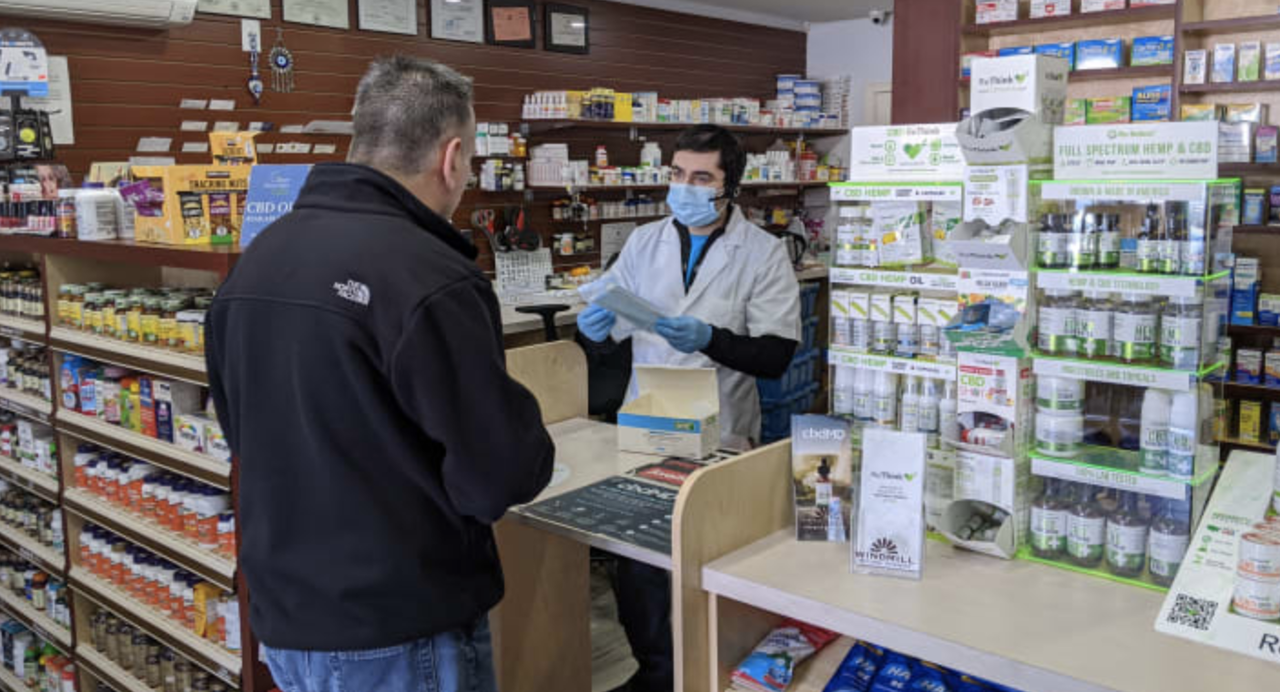In the weeks since California became the first state to order residents to shelter in place, millions of Americans have grappled with an alarming fact: That shortages of products from Tylenol to toilet paper have continued. If anything, they’ve gotten worse, even as governors like Andrew Cuomo have pleaded with the public not to hoard and buy up supplies like gloves and masks that are needed by health-care professionals.
While health officials have tried to dismiss this simply as a consequence of panicked hoarding, there are more complex dynamics at play, as CNBC explains in a recent piece exploring the shortages of basic products and common medications at pharmacies across NYC – the epicenter of the national outbreak.
In Broadway Chemists, an independent pharmacy on the Upper West Side, Tylenol, the classic over-the-counter painkiller made by JNJ, has been unavailable for weeks. Sophia Liristis, the pharmacist in charge, told CNBC that it’s on back-order until April 30.
So unless something changes, the people of the Upper West Side won’t be able to buy Tylenol until the end of April at the earliest. That’s four weeks away.
But Tylenol isn’t the only common medical item that’s in short supply. When Liristis checked her system on Tuesday while speaking to CNBC, she found that thermometers, gloves and masks were not available until May. Pulse oximeters, used to monitor blood-oxygen levels, were unavailable until May 31. Ventolin inhalers, which can ease shortness of breath, were only available two units at a time. Hydroxychloroquine, the drug used to treat malaria and lupus, and the Zithromax Z-Pak, were so limited as to be practically unavailable.
S Bros Pharmacy in Brooklyn’s Williamsburg neighborhood filled its inventory with hydroxychloroquine and Z-paks when word started to spread that the drugs could be used to treat COVID-19. But the pharmacy is now dispensing hydroxychloroquine only to patients who suffer from chronic autoimmune diseases and those enrolled in a New York study of the drugs’ efficacy, in accordance with state laws and guidelines.
However, S Bros’ shelves are also scarce, with no Tylenol, no hand sanitizer, and no cleaning supplies like alcohol and peroxide. By now, these products have been long gone. The store struggles to get a few cans of sanitizing spray to decontaminate the pharmacy.
“There’s a shortage of everything – it’s never enough,” said Evangeline Frezoulis, 37, the pharmacy manager at S Bros. “The wholesalers are not able to supply as many pharmacies as needed.”
When these small independent shops run out of items, some independent pharmacists tell customers to check with the chain pharmacies, even though it hurts their business.
“You’re just trying to help the patient get what they need,” Liristis said. “It doesn’t matter if it’s here or somewhere else – we’re just trying to work together.”
While pharmacies in NYC are probably feeling these problems most acutely, it’s occurring across the country to varying degrees. Furthermore, what’s causing these widespread shortages isn’t all that complicated: Over the past few decades, production for medical equipment from masks to plastic gloves has mostly been moved abroad, to places like China and India. With China now battling the second wave of the pandemic, and Indian factories struggling under the weight of an unprecedented lockdown, production is being constrained at a time when demand is soaring all over the world at the same time.
In other words, a “supply shock”, is meeting a different kind of “demand shock.”
If that isn’t clear enough, supply chain managers from Amerisource Bergen and CardinalHealth, two of the biggest suppliers of drugs and medical equipment in the US, explained the problems they are facing.
AmerisourceBergen, a pharmaceutical wholesaler, said the pandemic is pinching supply chains worldwide. As the company places large orders to meet surging U.S. demand, manufacturers in countries like India, which is under nationwide lockdown, are balancing those orders with obligations in regions like the European Union, which is also severely impacted.
“What we’re seeing in the supply chain today particularly from the pharmacy side is an insatiable demand for a limited amount of product,” said Heather Zenk, senior vice president of secure supply chain at AmerisourceBergen. “We are seeing manufacturers talk about things like historical inventory demands and historical product movement,” she said.
In response, AmerisourceBergen is limiting how much pharmacies receive of certain drugs to ensure they get at least some product, a policy the company calls “fair allocation.”
Cardinal Health, another major wholesaler, said it’s managing the distribution of more than 100,000 products considered critical inventory which are in unprecedented demand since the pandemic started to spread. “We are experiencing backorders and declining inventory levels at rates never experienced before,” the company said, in a website statement, warning that customers may only receive partial deliveries while other products are out of stock altogether.
It’s impossible to say when inventories for thousands of products like Tylenol and hand sanitizer will stabilize. And as Americans in certain hot spots around the country continue to struggle to find toilet paper, we suspect widespread hoarding will continue.
Some pharmacies are even home-brewing their own hand sanitizer, just like the inmates in New York’s state prisons. City Drug & Surgical in Manhattan’s Washington Heights neighborhood has been making hand sanitizer since the brand names sold out about three weeks ago. The pharmacy’s owner told CNBC that a batch of the stuff typically takes about 40 minutes to make a batch of 24 bottles. They sell out almost immediately.
How long before pharmacies start making their own reusable face masks – like the kind that the CDC are recommending – out of old T-shirts and rags?
